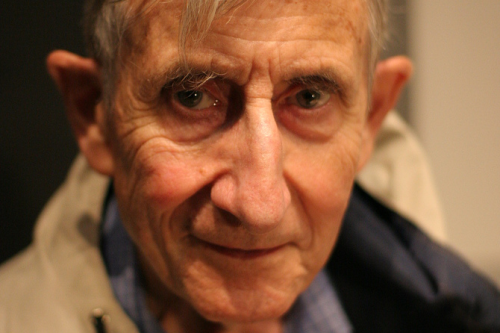
Mr Freeman Dyson: “so lucky” not to have a PhD. (CC BY-SA 2.0/Jacob Appelbaum)
By Hamish Johnston
What would it be like to have known Hans Bethe, Wolfgang Pauli, Robert Oppenheimer and Richard Feynman? One person who can tell is the theoretical physicist Freeman Dyson, who recounts his extraordinary life in an interview in Nautilus entitled “My life with the physics dream team”. Born in the UK, he got a degree in mathematics at the University of Cambridge before embarking on a PhD with Bethe at Cornell. Remarkably, Dyson did not complete his doctorate – something he seems rather pleased with: “I was so lucky. I slipped through the cracks.”
Avid readers may remember a study of the remains of the legendary Danish astronomer Tycho Brahe, which concluded that he did not die of mercury poisoning, contrary to 400 years of rumour and hearsay. Now the researchers from the University of Southern Denmark, led by Kaare Lund Rasmussen, have looked at hairs on the astronomer’s scalp, beard and eyebrows, finding that he was regularly exposed to large quantities of gold just before his death. Writing in Archaeometry the team says that the locks had a gold content some 20–100 times higher than one would expect to find in a typical person today. Yet gold was not the only metal the researchers found, as Brahe’s hair also contained traces of iron, cobalt, arsenic and silver in concentrations exceeding what is common today. As the concentration of metals is lower in the younger parts of the hairs, the team concludes that Brahe was not exposed to these metals until around two months before his death. The mystery surrounding his passing continues.
How much would you pay for a “key moment in the history” of comic book art? Well, an original 1954 drawing by the cartoonist Georges Remi (aka Hergé) showing Tintin, his dog Snowy and the sailor Captain Haddock in spacesuits and walking on the Moon was sold at auction in Paris for a mouth-watering €1.55m. The 50 × 35 cm page of comic-strip pictures, which was drawn in Chinese ink, are from one of the best-known Tintin adventures, “Explorers on the Moon”. The strip fetched almost double the guide price, which had been between €700,000 to €900,000. The work, which was published 15 years before the first real Moon landing, was auctioned at the Artcurial auction house and was sold to an anonymous European collector. “It’s simply fantastic,” says Eric Leroy, Artcurial’s comics expert. “It’s an exceptional price for an exceptional piece.”
Guidelines
Show/hide formatting guidelines
this text was deletedwhere people live in harmony with nature and animals</q>
Some text